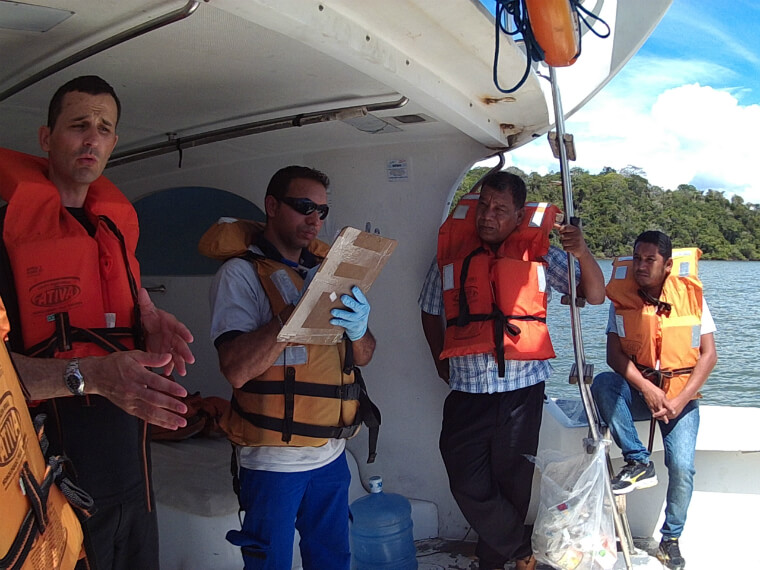The analyses will be completed in April and shared during the dialogue meetings
Representatives of the Tupiniquim and Guarani people, chosen by their community, have accompanied the monthly collections and analyses of water quality in the region. Currently, the monitored rivers are the Piraquê-Açu, the Guaxindiba and the Sahy, fundamental for the Tupiniquim and Caieiras Velha II communities. This monitoring ensures the water safety and water supply in these communities.
“In addition to legitimizing the collections and analyses, the indigenous participation is a facilitator. We add insight on the land and nature, we connect the indigenous and scientific intelligence and gain knowledge and transparency”, says Eduardo Bustamante, of the Indigenous Peoples and Traditional Communities Front, who, since March, have been performing this work.

Team of the Renova Foundation is monitoring the water quality and includes the participation of Tupiniquim and Guarani peoples. | Photo: Release
Analyses of March collections will be completed in April. The results will be shared with the indigenous communities during the dialogue meetings. Starting in May, participatory water monitoring will be held in the Comboios River and the Caboclo Bernardo Stream, on the Indigenous Land Comboios in Aracruz (ES).
In April, meetings were held for the presentation and validation of the Work Plan of the Indigenous Component Study. Recommended by the National Indian Foundation (Funai), the independent study is a fundamental tool to measure the social, cultural, economic, environmental and cosmological impacts arising from the dam collapse.
